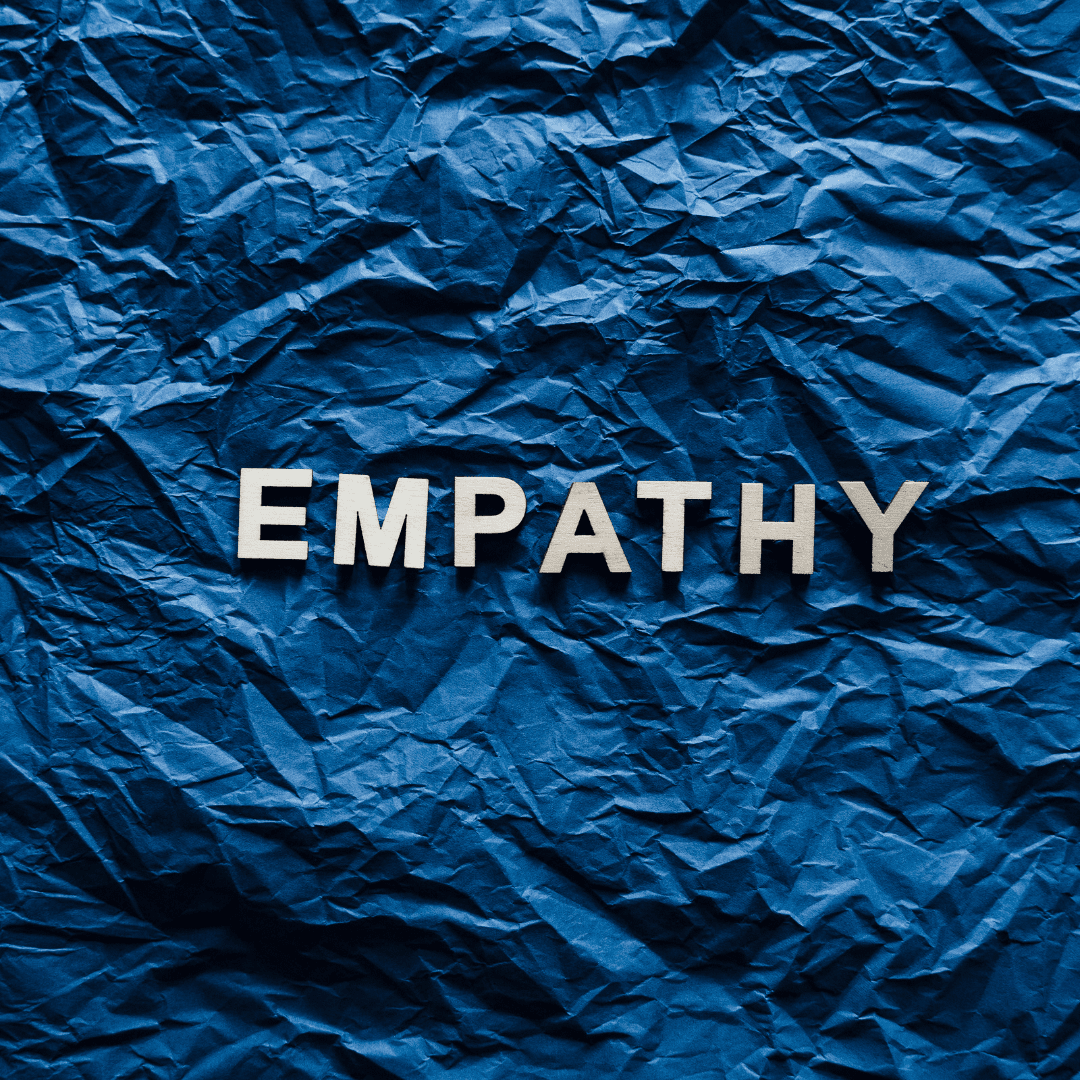by Ashley Bennett, Director of Trauma-Informed Care
Empathy begins in infancy. When you regularly meet the needs of your infant, you are actually teaching them that they matter, that you are able to put yourself in their shoes, and that you have the ability to help them feel better. As your infant becomes a toddler, you continue to teach empathy through meeting their needs. Right now that looks like me constantly giving kisses and hugs for the “owies” my two year old gets. He is growing empathy for others, because he sees me giving empathy to him. He’s experiencing it, not through lectures but through relationship.
In the late toddler years/preschool years, we continue to teach empathy by meeting our kids needs. But we can also start to point things out in our family, in books, and in television.
“Your brother fell down off the swing. What do you think he needs from us right now?”
“Daniel Tiger is sad his mom is leaving to go to work. How do you think he feels?”
“That show made me a little sad. How do you feel?”
“Grandma is sick. What can we do to help her feel better?”
We can also help our kids with empathy when we reflect back to them how they feel and we help name their emotions. “You seem angry at your sister after she said that.” “You seem sad that your friend had to leave.” “You seem worried about that test tomorrow at school.” Reflectively calling out what we see, helps your children become more familiar with emotions they’re experiencing, which then helps them become more aware of it in others.
Likewise, we can model this by naming things for ourselves too. “I am nervous about work today because I have a presentation to give.” “Those words make me sad.” “I didn’t sleep well last night, so I am extra tired today.”
When our kids get older, we have to continue to show empathy through our words and actions. But often times as parents, we just want to “fix things.” We stop listening and giving empathetic responses and we’re more likely to give responses that tell our kids what to do or how to feel. I love this video by Brene Brown on what empathy is and isn’t:
Rarely does a response makes something better, what makes something better is connection.”
The challenge for us as foster parents, is that we may not have had our kids from infancy and so we can’t be sure they “received empathy” before they came to us. In fact, what we know about their stories, is that it is highly unlikely they received the gift of empathy. Our children heard “You don’t matter” and “I don’t see you.” If that is the lesson of your childhood experience, how can you then look at others (teachers, friends, siblings, foster parents) and have empathy?
For these kids, we have to go back and give them what they missed. All the things I wrote above. Meet their needs consistently and show that they matter. Give empathetic response to them. Call out their emotions and your own. Create teachable moments for empathy by reading stories together or watching television or movies.
With younger kids this is easily done through reading stories to them or watching a cartoon and briefly chatting about it afterwards. For older kids, we might have to get more creative as they may be reading independently or not sitting down with you to watch as much tv. My teens and I have read several of the same books this past year and have a weekly movie night–so those would be two ways to provide opportunities for some discussion. Discussing current events can also help your youth think through things that are going on in the world around them and grow empathy. Also, volunteering together in some capacity can help your child learn to think of others.
Within our homes, growing empathy towards one another might also look like engaging in specific dinner time questions or intentional time to play a question asking game that allows everyone to get to know each other and see each other as human beings! There are a couple from this list that might work for older kids, although you can make your own questions up too and put them in a box or jar. Here is one that is multiple choice that would work for a child who might struggle to answer an open-ended question. And here is another one for younger kids. I can’t recommend any specific books from this list but I found this list and it could be helpful in choosing stories to read.
Again, learning empathy is going to be really hard if a child hasn’t experienced empathy themselves within the context of a safe family so that has to be a priority within the family. The safe adults have to model this for their children. However, we also know that this can be hard as foster parents if we are struggling with our own childhood stories of trauma or are suffering from secondary caregiver stress or blocked care. Then the priority also has to be on the adults doing some work to get to a healthier place.
